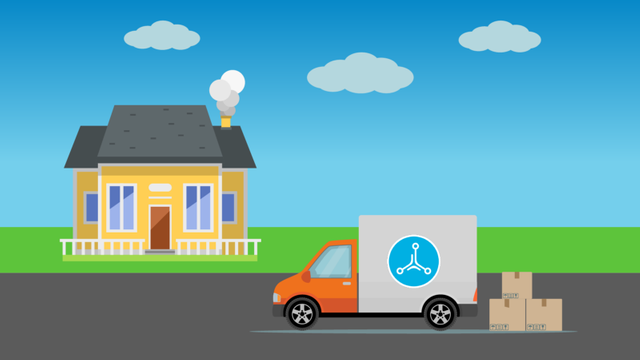What is the "Last Mile?"

With global e-commerce sales expected to exceed 4.1 trillion U.S. dollars by 2020, the need for on-demand deliveries has never been greater. As the popularity of e-commerce shopping continues to skyrocket due in part to factors like mobile-enabled shopping and voice-assisted shopping, there is a rise in demand for last-mile distribution.
What Exactly is the Last-Mile?
The term ‘last-mile’ pertains to the last leg in the delivery process. It is when a package goes from the warehouse or supplier to the purchaser’s home. This can include anything from a product purchased online to a meal ordered via a mobile app from a food delivery service.
The Evolution of Last-Mile Shipments
The evolution of last-mile fulfillment continues to shift dramatically. Last-mile shipments started with regular trucks from delivery companies. Then third-party deliveries via individuals using their own vehicles started to gain in popularity. Now bikes and scooters are being utilized to complete last-mile shipments. In the near future, autonomous vehicles and drones will be part of the last-mile delivery process. These powerful changes in last-mile transport are causing ripple effects throughout the industry.
In-House and Third-Party Crowdsourced Deliveries
Large companies are developing their own in-house delivery system by hiring employees or contracting independent workers to facilitate last-mile shipment processing. These individuals often use their own vehicles to make deliveries. Small businesses wanting to compete with larger companies are resorting to using third-party crowdsourced service providers like UberEats, DoorDash, and PostMates. Our Serve platform will offer businesses another option for last-mile deliveries, one that will be cheaper and more efficient for cost-conscious companies.
Last-Mile Delivery Efficiency is Critical
Why is this so important for growth-focused companies? Super efficient last-mile deliveries are fast becoming the expected norm by consumers. For both e-commerce retailers and brick-and-mortar businesses, superior last-mile delivery processes are a critical component of building a successful company. Today’s end-user consumers (both B2C and B2B) equate efficient last-mile deliveries with quality customer service. The demand for fast and efficient deliveries is growing globally, making nailing this essential element of business development a top priority for companies wanting to increase revenues.
The Potential of Serve for Last-Mile Mastery
Serve will bring transparency, data decentralization, reputation building, and accountability to last-mile deliveries. Our platform will allow delivery personnel to build their own reputations as top-performing last-mile product handlers. With factors like accountability systems, global delivery access, and reduced fees built into the Serve platform, both shippers and delivery personnel can use Serve to deliver superior last-mile service to customers. If you want to better understand the potential of Serve to power your business to last-mile delivery supremacy, study our Serve white paper for more details.
In Conclusion
Regardless of whether you’re using a third-party platform to order your meals or having your e-commerce shipment delivered by a bicycle courier, you’re part of the global trend towards last-mile delivery optimization. Understanding how last-mile shipments are changing and the opportunities on the horizon are key for those wanting to participate in the future of logistics and retail.